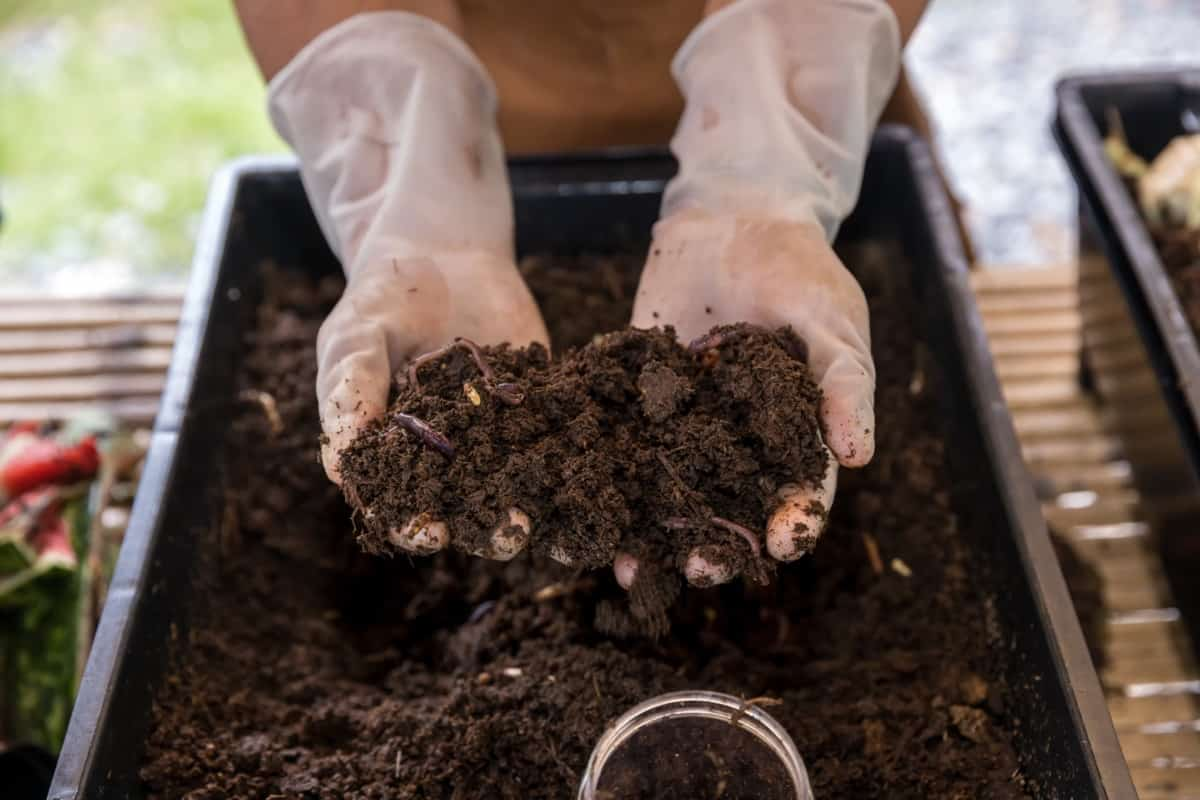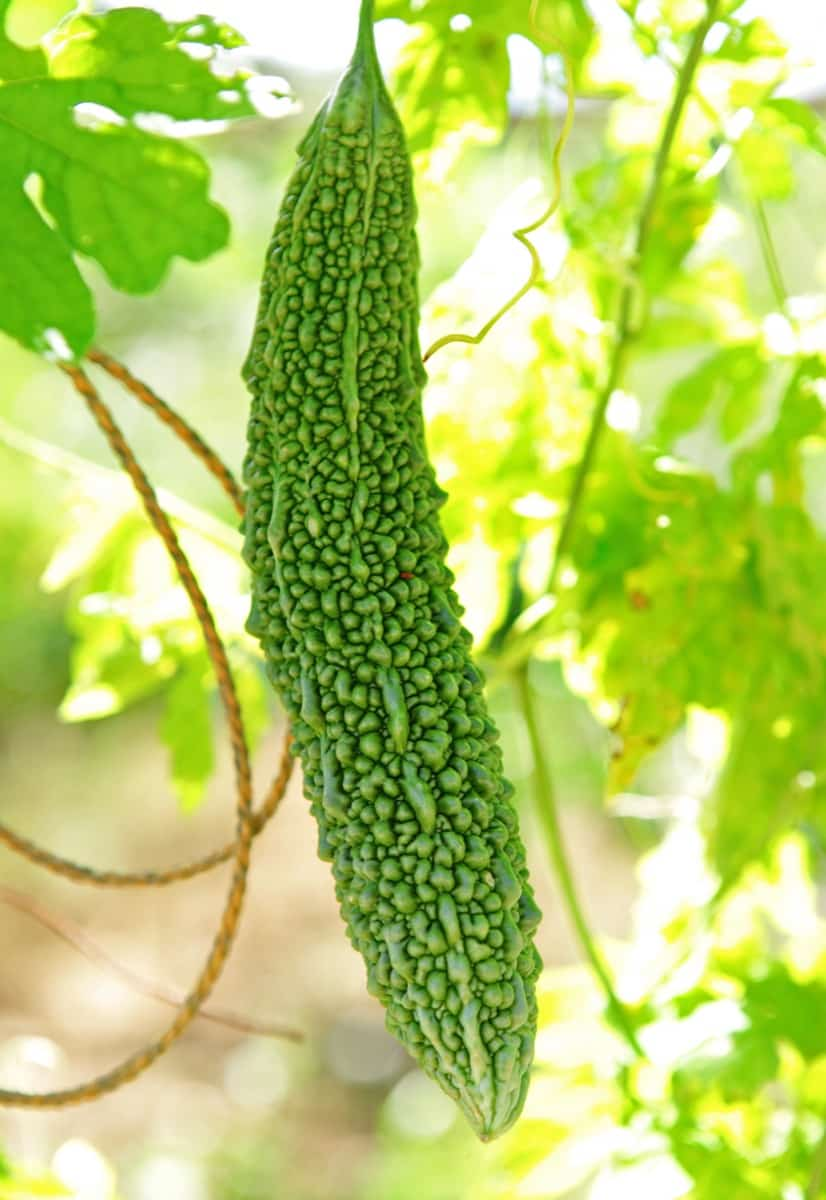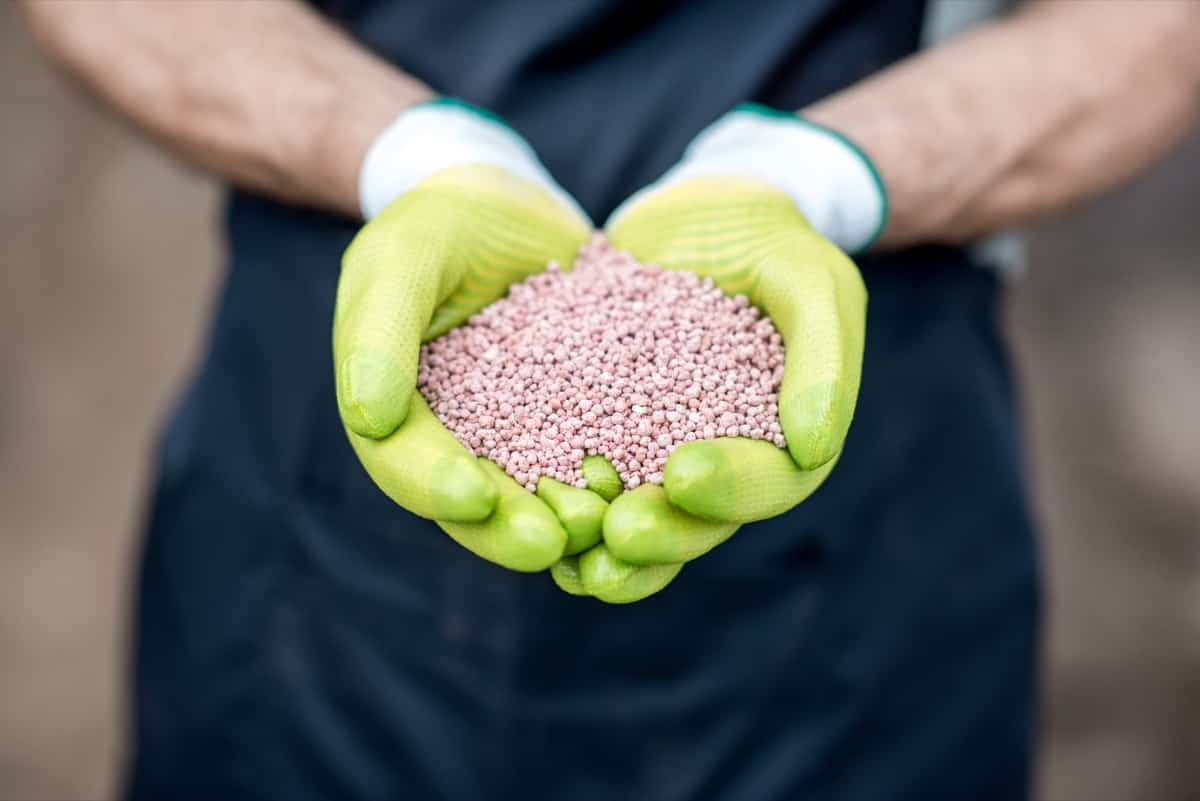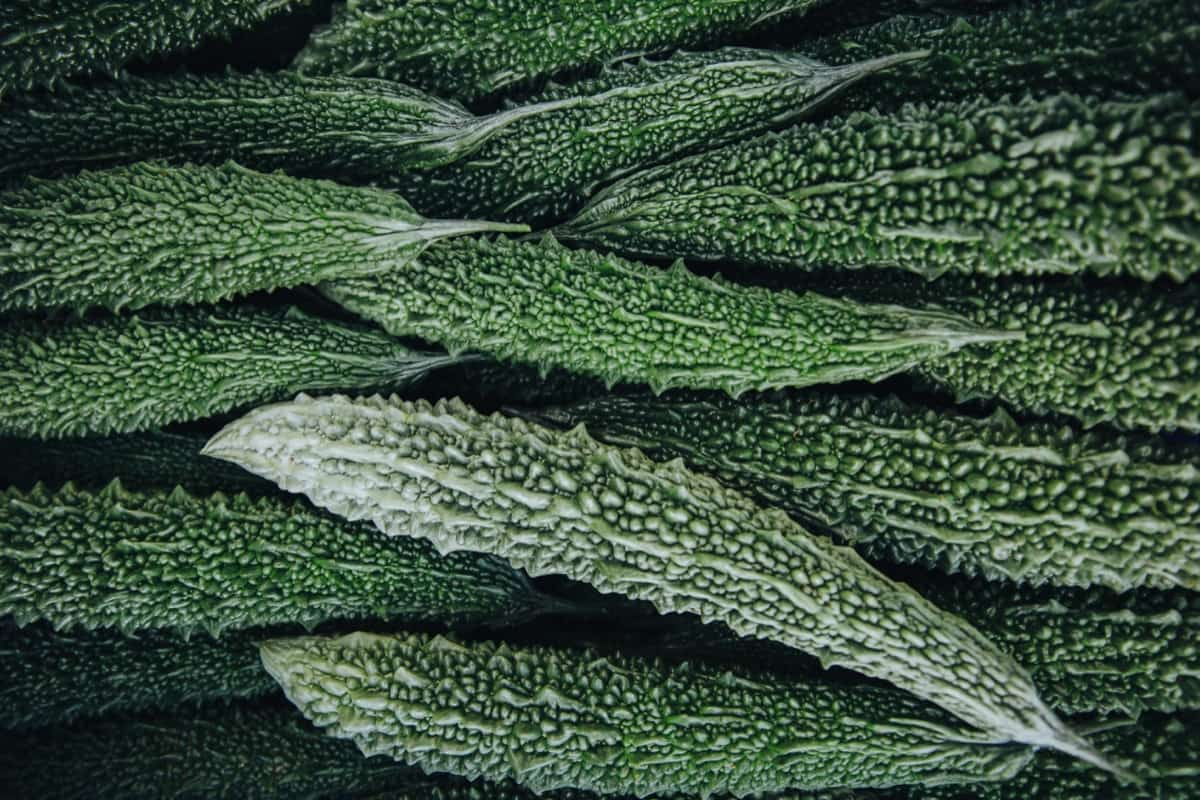Bitter gourd, also known as bitter melon, is a popular and nutritious vegetable valued for its unique taste and numerous health benefits. Choosing the right fertilizer is crucial to cultivating healthy and productive bitter gourd plants. This informative blog will delve into bitter gourd cultivation, focusing on the best fertilization practices.
We’ll explore organic and natural options, even homemade solutions, to promote optimal growth. Additionally, we’ll discuss the ideal NPK ratio and guide on when and how to apply these fertilizers for a bountiful bitter gourd harvest.

Best Fertilizer for Bitter Gourd
Bitter Gourd’s Nutrient Needs
Bitter gourd, also known as bitter melon, requires major nutrients for healthy growth, including nitrogen, phosphorus, and potassium (K). Nitrogen is crucial for leafy green growth, while phosphorus promotes robust root formation and flower production. Potassium is essential for fruit development and quality, enhancing taste and resisting diseases.
Secondary nutrients like calcium, magnesium, and sulfur support plant health. Micronutrients like iron, manganese, and zinc are necessary for metabolic processes. Maintaining a balanced nutrient profile is essential, as excessive fertilization can lead to bitter fruit or poor yield. Soil testing is recommended for precise fertilizer application. Foliar feeding can also be beneficial, providing nutrients directly to the leaves.
Best Organic Fertilizers for Bitter Gourds
Weed Fertilizer: Unwanted garden weeds can be a valuable resource. They are rich in nutrients and make excellent natural fertilizers. To create weed tea, soak the weeds in water for several days until the water turns brownish like tea. Then, use this nutrient-rich solution to water your bitter gourd plants.
Kitchen Scraps: Composting kitchen scraps is a sustainable way to provide plant nutrients. While compost releases nutrients slowly, it enriches the soil over time. Additionally, kitchen scraps help retain moisture in the soil, offering a buffer against hot and dry weather conditions, which is beneficial for bitter gourds.
Manure – Chicken and Domestic Animals: Various types of animal manure, including chicken manure, are rich in nitrogen and essential nutrients that benefit bitter gourds. However, raw manure can be acidic and potent. Drying the manure for several days before applying it to your plants is advisable, reducing its acidity and making it more suitable for your bitter gourds.
Proper Usage: When using organic fertilizers, it’s essential to use them in moderation. Excessive use can lead to nutrient imbalances or other issues. Organic fertilizers are generally slow-release, so monitor your plants’ growth and adjust the frequency of application accordingly.
In case you missed it: How to Increase Female Flowers in Your Gourds: Unlock the Secret for a Better Harvest

Benefits of Organic Fertilizers
- Improved Soil Health: Organic fertilizers enrich the soil with essential nutrients and organic matter, enhancing soil structure and fertility.
- Sustainable Nutrient Release: They release nutrients slowly, providing a steady supply to plants over time and reducing the risk of nutrient runoff.
- Reduced Environmental Impact: Organic fertilizers are less likely to harm the environment as they contain natural ingredients, reducing chemical pollution.
- Enhanced Nutrient Absorption: Organic fertilizers promote beneficial microbial activity in the soil, improving plant nutrient uptake.
- Minimized Soil Erosion: Organic matter in these fertilizers helps bind soil particles, reducing erosion caused by wind and water.
- Healthier Plant Growth: They contribute to strong root development, vigorous plant growth, and increased resistance to pests and diseases.
- Safe for Beneficial Organisms: Organic fertilizers do not harm beneficial insects, earthworms, and microorganisms that contribute to a balanced ecosystem.
- Improved Nutrient Retention: They enhance the soil’s ability to retain water and nutrients, reducing the need for frequent watering and fertilization.
Chemical Fertilizers Used for Bitter Gourds
Phosphate Fertilizers
- Phosphorus for Fruit Quality: Bitter gourds require phosphorus-rich fertilizers to enhance fruit quality and yield. Phosphorus plays a crucial role in fruit development.
- Root Growth and Nutrient Uptake: Phosphates contribute to better fruits, support robust root growth, and improve the plant mechanism to absorb nutrients from the soil.
- Application Before Planting: To prepare the soil for bitter gourd cultivation, add approximately one-tenth of a pound of phosphorus per 100 square feet.
- Ideal Ratios: Bitter gourds thrive with specific NPK ratios, such as 4-48-5 or 6-10-10, emphasizing the importance of balanced phosphorus levels.
Potassium Fertilizers
- Abundant Potassium Requirement: Bitter gourds have a high demand for potassium to boost yield and overall plant health.
- Initial Soil Fertilization: When planting, it’s recommended to fertilize the soil with 91 grams of potassium per 100 square feet.
- Potash as a Source: Potassium in the form of potash is commonly used in gardens to meet this requirement. Potassium nitrate and potassium magnesium sulfate are also effective sources of potassium.
- Stem Health and Flower Development: Potassium promotes sturdy stem growth and the development of well-formed flowers, ultimately producing high-quality fruit.
- Water Efficiency and Drought Resistance: Potash aids in efficient water use by the plant and enhances its ability to withstand drought conditions, ultimately benefiting fruit development.
Nitrogenous Fertilizers
- Rapid Growth and Greenery: Nitrogen is crucial for the rapid growth of bitter gourd plants and the healthy development of foliage and greenery.
- Primary Nutrient: Among all the essential nutrients, nitrogen is absorbed by the plant in greater quantities.
- Balanced Use: While nitrogen is essential, excessive use can lead to excessive greenery at the expense of fruit production. Maintain a balance to optimize yield.
- Recommended Dose: A nitrogen fertilizer dose of 50-100 kg per hectare is sufficient to support bitter gourd growth without overstimulating greenery.
In case you missed it: Growing Bitter Gourd Organically in Karnataka: Farming Practices and Production Management

Advantages and Disadvantages of Chemical Fertilizers
Advantages of Chemical Fertilizers
- Soil Improvement: Chemical fertilizers can quickly improve infertile soils, making them suitable for agriculture.
- Cost-Effective and Easy Application: They are generally more affordable than organic fertilizers and are easy to apply, which makes them accessible for many farmers.
- Essential Nutrients (NPK): Chemical fertilizers provide a reliable source of the three essential nutrients (nitrogen, phosphorus, and potassium – NPK) needed for plant growth. This ensures that plants receive these nutrients in precise quantities.
- Reliability and Predictability: They offer predictable nutrient content, allowing farmers to plan and adjust fertilizer applications more accurately.
- Sufficient Nutrient Levels: Chemical fertilizers contain a concentrated amount of nutrients, ensuring that plants receive an adequate supply for optimal growth.
Disadvantages of Chemical Fertilizers
- Environmental Pollution: One significant drawback is soil and groundwater pollution potential. Chemical fertilizers are highly soluble and can easily leach into groundwater, leading to contamination.
- Harmful Elements in Food: There’s a risk that harmful elements from chemical fertilizers may find their way into the food chain, posing health concerns for consumers.
- Incorrect Usage Consequences: Misuse or overuse of chemical fertilizers can harm plants rather than benefit them, leading to issues like nutrient imbalances and reduced crop quality.
- Harm to Soil Microorganisms: Chemical fertilizers can negatively impact soil microorganisms, disrupting the natural balance in the soil ecosystem, which is crucial for nutrient cycling.
- Soil Degradation Over Time: Prolonged use of chemical fertilizers can lead to soil degradation as they may strip the soil of other essential micronutrients and organic matter, reducing soil fertility.
- Greenhouse Gas Emissions: Excessive use of nitrogen-based chemical fertilizers releases greenhouse gases, such as carbon dioxide and nitrous oxide, into the atmosphere, exacerbating climate change.
- Plant Disease Promotion: Chemical fertilizers can encourage the development of certain plant diseases due to imbalanced nutrient ratios, making crops more susceptible to infections.
DIY Fertilizers: Crafting Homemade Solutions
Weed Tea Fertilizer: Unwanted garden weeds are rich in nutrients and can be transformed into a potent fertilizer. Soak the weeds in water for several days until the water turns brownish like tea. Then, use this nutrient-rich solution to water your bitter gourd plants.
Kitchen Scraps (Compost): Composting kitchen scraps is a sustainable way to provide nutrients to your plants over time. Compost releases nutrient slowly and helps the soil maintain moisture, which is beneficial during hot and dry weather.
Manure (Chicken and Domestic Animals): Manure from various sources, like chickens and other domestic animals, is rich in nitrogen and other essential nutrients. However, raw manure is acidic and should be dried for several days before applying it to your plants to reduce acidity.
Advantages of Homemade Organic Fertilizers
- Cost-Efficient: Homemade fertilizers are budget-friendly as they utilize readily available materials from your garden and kitchen.
- Eco-Friendly: They promote sustainability by reducing waste through composting and recycling garden materials.
- Slow-Release Nutrients: Homemade fertilizers release nutrients gradually, providing a consistent supply for plant growth without the risk of nutrient imbalances.
In case you missed it: Earning 8 Lakh Rupees from Spine Gourd Cultivation: A Success Story of Kantola/Teasle Gourd Farmer in India

Disadvantages of Homemade Organic Fertilizers
- Preparation Time: Some homemade fertilizers require time for preparation and decomposition, which may provide little nutrient availability.
- Risk of Imbalance: With careful monitoring, homemade fertilizers can lead to nutrient imbalances in the soil if prepared and applied correctly.
- Nutrient Variability: The nutrient content of homemade fertilizers may vary, making it challenging to determine precise nutrient levels.
Use of DIY Fertilizer
Tea Fertilizers: Mix Epsom salts, wood ash, animal urine, green leaves, grass, or weed in a 5-gallon bucket filled with water. Let it steep for three to five days, then dilute with water before applying it directly to the soil.
Fish Emulsion Fertilizers: Combine fish waste and water in a 55-gallon drum, then cover and let it sit for several weeks. Apply the emulsion fertilizer around your plants at the recommended rate.
Seaweed Fertilizer: Wash about 10 cups of seaweed and steep it in a 5-gallon bucket filled halfway with water for three weeks. Strain the seaweed tea and dilute it with water before applying it to the soil around your plants.
When to Fertilize Bitter Gourd
To ensure the optimal growth of bitter gourd seeds, preparing the soil by incorporating well-rotted compost or organic matter before sowing is essential. When transplanting seedlings, a balanced, slow-release fertilizer can be mixed into the planting hole to provide essential nutrients. A balanced fertilizer with a higher nitrogen (N) ratio during the early growth stage can promote healthy foliage development.
A balanced NPK (nitrogen, phosphorus, potassium) fertilizer should support flower and fruit development as the plants begin to flower. A balanced fertilizer should be continued during fruit development to ensure optimal fruit growth. Mid-season maintenance is recommended, with a slow-release granular or liquid fertilizer being supplemented every 4-6 weeks to maintain consistent nutrient levels.
In case you missed it: Top 20 Steps to Boost Bottle Gourd Yield: How to Increase Production, Size, and Quality

It is crucial not to over-fertilize, as excessive nitrogen can lead to excessive vine growth and fruit production. Reducing or stopping fertilization 2-3 months before the expected harvest date allows the plants to focus on ripening existing fruits. During harvest, focus on proper harvesting techniques to collect ripe and high-quality bitter gourds. Post-harvest cleanup should include compost or organic matter to replenish the soil for future crops.
How to Apply Fertilizers for Bitter Gourd
Optimal growth and fruit production in bitter gourd plants, it is needed to conduct a soil test to determine its nutrient needs. Choose a balanced fertilizer with an appropriate NPK ratio, such as a general-purpose, slow-release granular fertilizer with equal NPK ratios. When preparing the planting hole for seedlings, mix a small amount of balanced fertilizer into the soil to provide a nutrient-rich environment.
Side-dressing involves applying fertilizer to the soil surface around the base of the plant, scattering it evenly, and keeping it away from the plant stem to prevent burning. Granular fertilizer can be incorporated into the soil by creating shallow trenches or furrows and covering it with soil. Liquid fertilizers can be applied as a soil drench or foliar spray, diluting according to the manufacturer’s instructions and applied to the soil around the plant, or as a foliar spray on the leaves.
Follow the recommended frequency of application, typically every 4-7 weeks during the growing season, and water the area thoroughly after application to help nutrients reach the root zone. Adjust the fertilization schedule based on weather conditions, as hot and dry weather may require more frequent watering to prevent nutrient burn. Regularly monitor the health of your bitter gourd plants and adjust your fertilization regimen accordingly if you any signs of nutrient deficiency or excess.
In case you missed it: How this Farmer Earning 25 Lakh Rupees from his Bitter Gourd Farm: A Success Story to Inspire

Conclusion
Optimal bitter gourd cultivation, choose a balanced NPK fertilizer, consider organic and homemade options, apply at key growth stages, and monitor plant health for a successful and productive harvest.
- Types of Pesticides Used in Agriculture: A Beginner’s Guide
- Economical Aquaculture: A Guide to Low-Budget Fish Farming
- 15 Common Planting Errors That Can Doom Your Fruit Trees
- How to Make Houseplants Bushy: Effective Tips and Ideas
- Innovative Strategies for Boosting Coconut Pollination and Yield
- Pollination Strategies for Maximum Pumpkin Yield
- The Complete Guide to Chicken Fattening: Strategies for Maximum Growth
- Natural Solutions for Tulip Problems: 100% Effective Remedies for Leaf and Bulb-Related Issues
- Revolutionizing Citrus Preservation: Towards a Healthier, Greener Future
- Natural Solutions for Peony Leaf and Flower Problems: 100% Effective Remedies
- Maximizing Profits with Avocado Contract Farming in India: A Comprehensive Guide
- Natural Solutions for Hydrangea Problems: 100% Effective Remedies for Leaf and Flowers
- The Ultimate Guide to Choosing the Perfect Foliage Friend: Bringing Life Indoors
- From Sunlight to Sustainability: 15 Ways to Use Solar Technology in Agriculture
- The Ultimate Guide to Dong Tao Chicken: Exploring from History to Raising
- The Eco-Friendly Makeover: How to Convert Your Unused Swimming Pool into a Fish Pond
- Mastering the Art of Delaware Chicken Farming: Essentials for Healthy Backyard Flocks
- 20 Best Homemade Fertilizers for Money Plant: DIY Recipes and Application Methods
- How to Craft a Comprehensive Free-Range Chicken Farming Business Plan
- Brighten Your Flock: Raising Easter Egger Chickens for Beauty and Bounty
- How to Optimize Your Poultry Egg Farm Business Plan with These Strategies
- Subsidy for Spirulina Cultivation: How Indian Government Schemes Encouraging Spirulina Farmers
- Ultimate Guide to Raising Dominique Chickens: Breeding, Feeding, Egg-Production, and Care
- Mastering the Art of Raising Jersey Giant Chickens: Care, Feeding, and More
- Ultimate Guide to Raising Legbar Chickens: Breeding, Farming Practices, Diet, Egg-Production
- How to Raise Welsummer Chickens: A Comprehensive Guide for Beginners
- How to Protect Indoor Plants in Winter: A Comprehensive Guide
- Ultimate Guide to Grow Bag Gardening: Tips, Tricks, and Planting Ideas for Urban Gardeners
- Guide to Lotus Cultivation: How to Propagate, Plant, Grow, Care, Cost, and Profit
- Agriculture Drone Subsidy Scheme: Government Kisan Subsidy, License, and How to Apply Online
- Ultimate Guide to Raising Araucana Chickens: Breed Profile, Farming Economics, Diet, and Care
- Bringing Hydroponics to Classroom: Importance, Benefits of Learning for School Students
- Ultimate Guide to Raising Polish Chickens: Breed Profile, Farming Economics, Diet, and Care
- Ultimate Guide to Raising Australorp Chickens: Profile, Farming Economics, Egg Production, Diet, and Care
- Silkie Chicken Farming: Raising Practices, Varieties, Egg Production, Diet, and Care
- Sussex Chicken Farming: Raising Practices, Varieties, Egg Production, Diet and Care